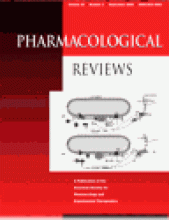Abstract
Since the discovery of self-cleavage and ligation activity of the group I intron, the expansion of research interest in catalytic nucleic acids has provided a valuable nonprotein resource for manipulating biomolecules. Although a multitude of reactions can be enhanced by this class of catalyst, includingtrans-splicing activity of the group I intron (which could be applied to gene correction), RNA-cleaving RNA enzymes or “ribozymes” hold center stage because of their tremendous potential for mediating gene inactivation. This application has been driven predominantly by the “hammerhead” and “hairpin” ribozymes as they induce specific RNA cleavage from a very small catalytic domain, allowing delivery either as a transgene expression product or directly as a synthetic oligonucleotide. Although advances in the development of RNA modifications have improved the biological half-life of synthetic ribozymes, their use is restricted by the mechanistic dependence on conserved 2′OH-moieties. Recently a new class of catalytic nucleic acid made entirely of DNA has emerged through in vitro selection. DNA enzymes or deoxyribozyme with extraordinary RNA cleavage activity has already demonstrated their capacity for gene suppression both in vitro and in vivo. These new molecules, although rivaling the activity and stability of synthetic ribozymes, are limited equally by inefficient delivery to the intracellular target RNA. The challenge of in vivo delivery is being addressed with the assessment of a variety of approaches in animal models with the aim of bringing these compounds closer to the clinic.
Footnotes
-
↵1 Address for correspondence: Dr. Lun-Quan Sun, Johnson and Johnson Research Laboratories, Locked Bag 4555, Strawberry Hills, NSW 2012 Australia. E-mail: lsun2{at}medau.jnj.com
- The American Society for Pharmacology and Experimental Therapeutics
PharmRev articles become freely available 12 months after publication, and remain freely available for 5 years.Non-open access articles that fall outside this five year window are available only to institutional subscribers and current ASPET members, or through the article purchase feature at the bottom of the page.
|






